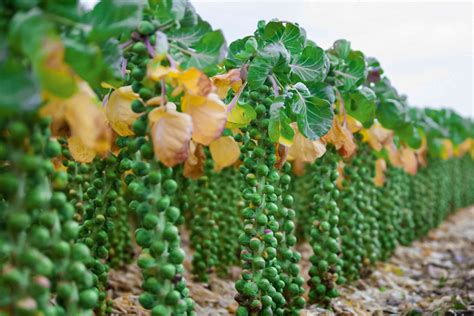How to Grow Delicious Brussel Sprouts: A Comprehensive Guide
Brussels sprouts, those miniature cabbages, are packed with nutrients and offer a delightful, slightly nutty flavor when prepared correctly. While they might have a reputation for being fussy, growing them successfully is achievable with the right knowledge and a little patience. This comprehensive guide will walk you through each step, from seed to harvest, ensuring a bountiful crop of these delicious mini-cabbages.
Planning Your Brussel Sprout Garden
Before you even think about planting, careful planning is key to a successful harvest. Consider these factors:
1. Choosing the Right Location:
- Sunlight: Brussels sprouts need at least 6-8 hours of direct sunlight daily. Select a sunny spot in your garden that receives ample light throughout the day.
- Soil: Well-drained soil is crucial. Brussels sprouts don't tolerate soggy conditions, so amend heavy clay soils with compost or other organic matter to improve drainage. A slightly acidic to neutral pH (6.0-7.0) is ideal.
- Space: These plants can grow quite large, so allow 18-24 inches between each plant to ensure adequate space for growth and air circulation, preventing diseases.
2. Selecting Your Seeds or Seedlings:
- Seeds: Starting Brussels sprouts from seed indoors, 6-8 weeks before the last expected frost, gives you a head start. Choose high-quality seeds from a reputable supplier.
- Seedlings: Purchasing established seedlings from a local nursery can save time, but ensure they are healthy and disease-free.
Planting and Growing Your Brussel Sprouts
Once you've planned your garden, it's time to get your hands dirty!
1. Planting:
- Timing: Plant seeds or seedlings outdoors after the last frost when the soil has warmed up.
- Depth: Plant seeds about ½ inch deep, and seedlings at the same depth they were growing in their containers.
- Spacing: Maintain the recommended spacing of 18-24 inches between plants.
2. Watering:
- Consistency: Brussels sprouts require consistent moisture, especially during dry spells. Water deeply and regularly, aiming for consistently moist but not soggy soil.
- Mulching: Applying a layer of mulch around the plants helps retain soil moisture and suppress weeds.
3. Fertilizing:
- Nutrient Needs: Brussels sprouts are heavy feeders. Feed them with a balanced fertilizer (a balanced NPK ratio is ideal) according to package directions. Consider using organic fertilizers for optimal soil health.
4. Pest and Disease Control:
- Common Pests: Watch out for common pests like aphids, cabbage worms, and slugs. Use organic pest control methods like insecticidal soap or diatomaceous earth, or handpick pests when possible.
- Diseases: Good air circulation is vital to prevent fungal diseases. Avoid overhead watering to prevent leaf diseases.
Harvesting Your Delicious Brussel Sprouts
The most rewarding part – the harvest!
1. Harvesting Time:
- Maturity: Brussel sprouts are ready for harvest when they are firm and have a dark green color. The smaller sprouts are usually the tastiest.
- Timing: Harvesting can begin in late fall and continue throughout winter, depending on your climate. Harvest individual sprouts as they mature.
2. Harvesting Technique:
- Gentle Removal: Gently twist or snap off individual sprouts from the stalk. Avoid pulling or damaging the main stem.
Tips for Success
- Succession Planting: For a longer harvest, consider planting Brussels sprouts in succession, planting a new batch every few weeks.
- Pest Prevention: Use row covers or netting to protect plants from pests, particularly cabbage worms.
- Winter Protection: In colder climates, provide some protection for your plants during winter with a row cover or mulch to extend the harvest season.
By following these tips, you'll be well on your way to a bountiful harvest of delicious, homegrown Brussels sprouts. Happy gardening!
